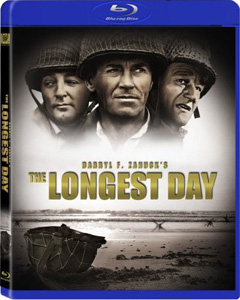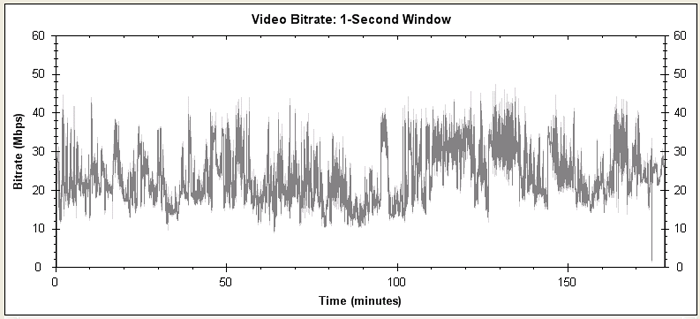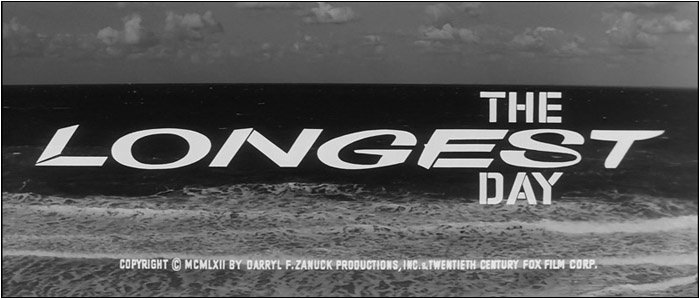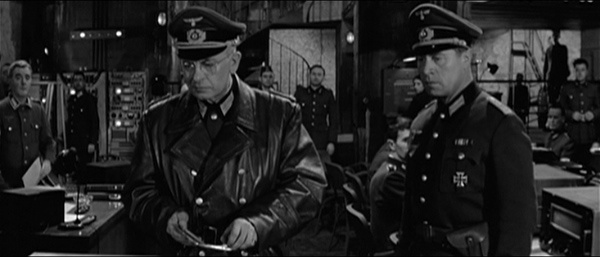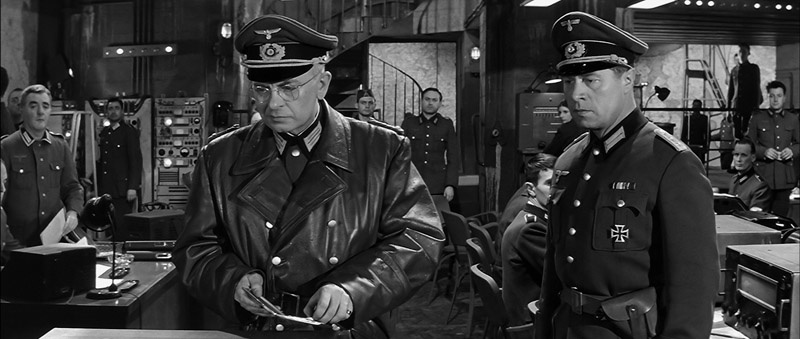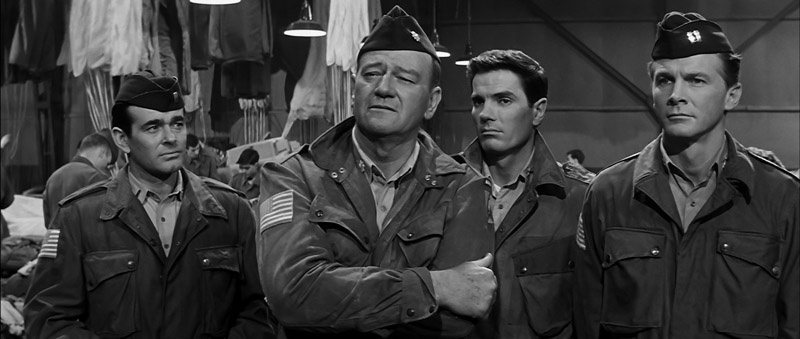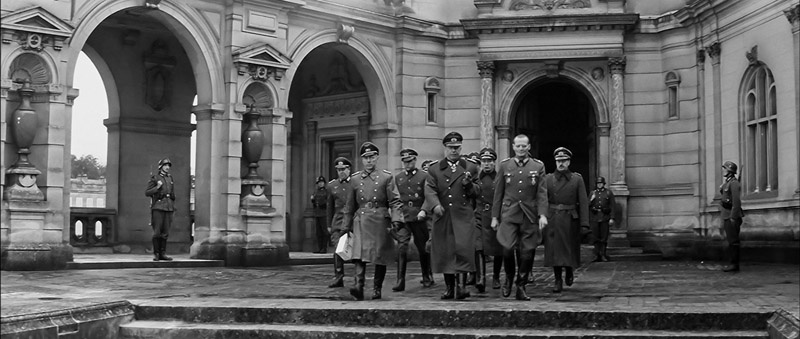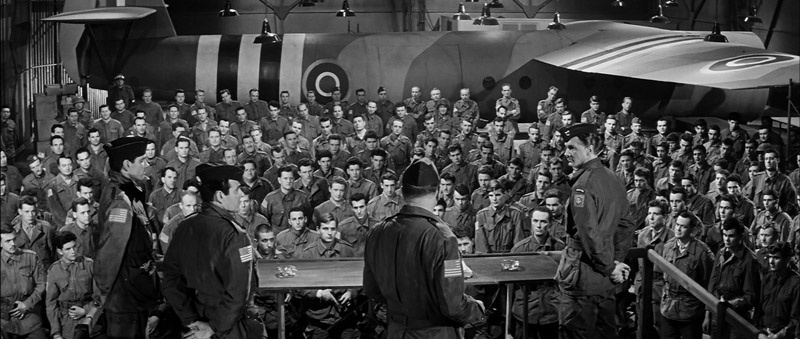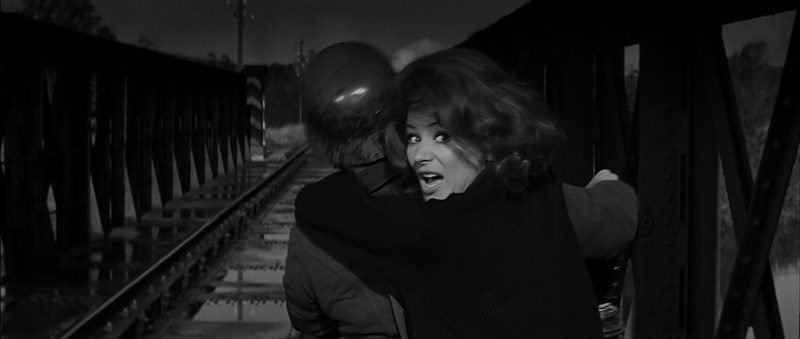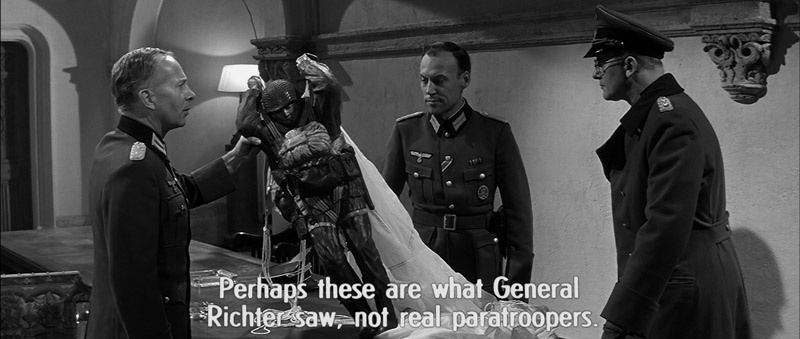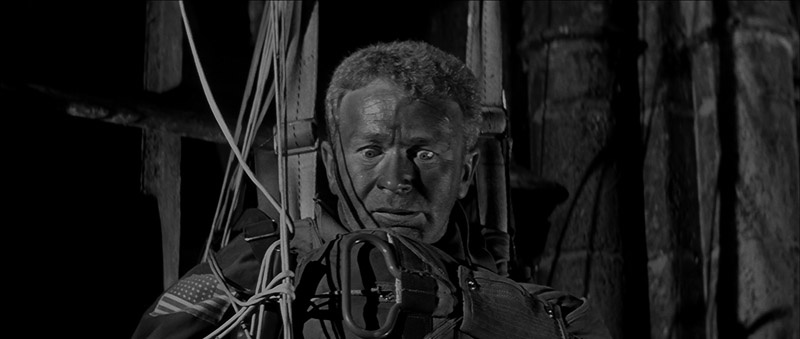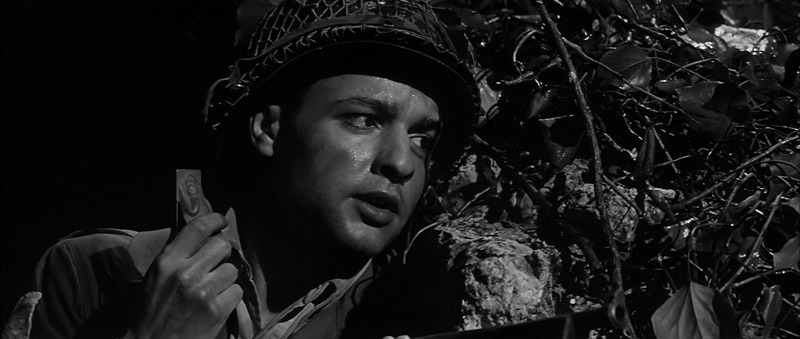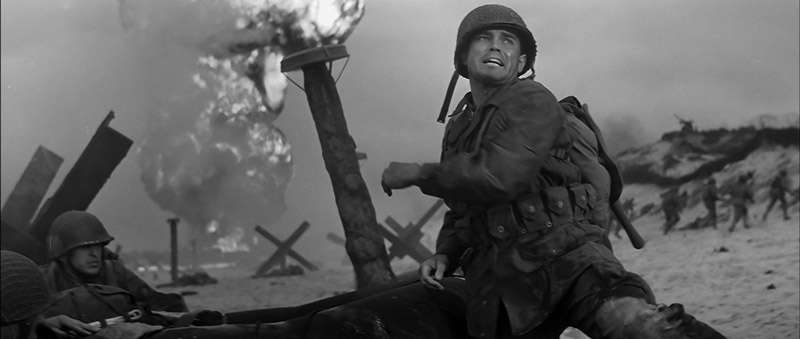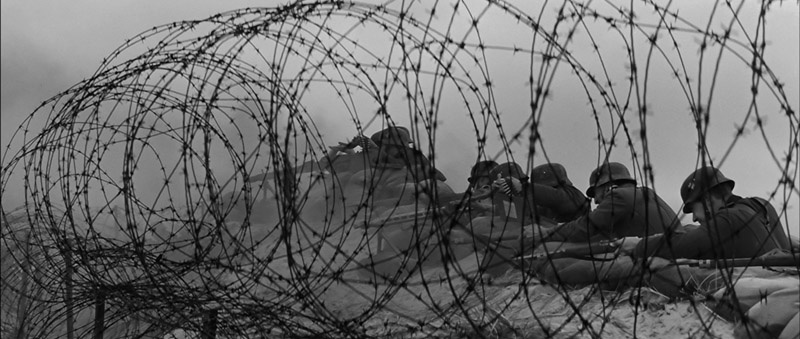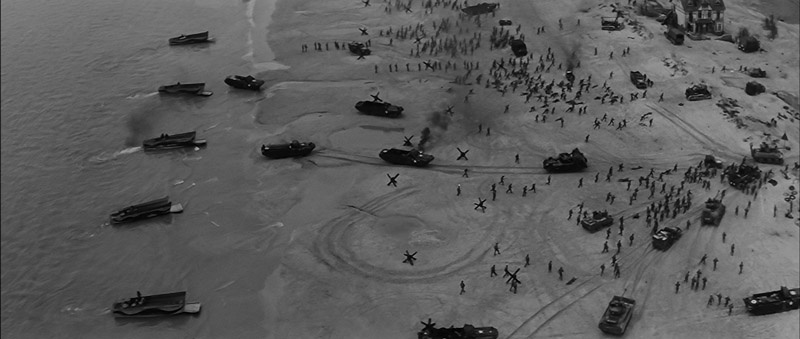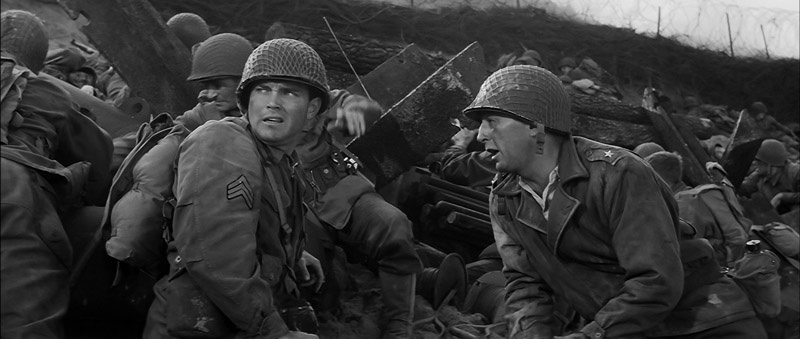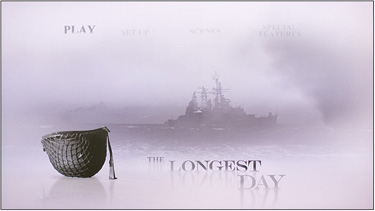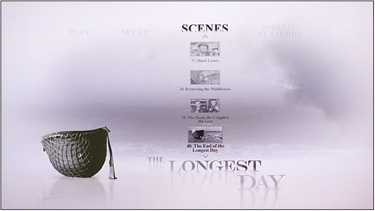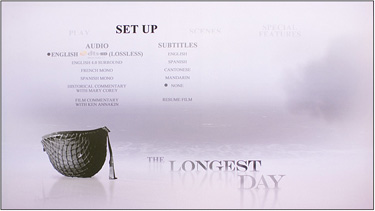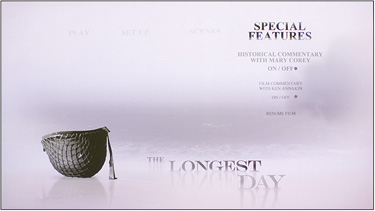The Fox Blu-ray War Bash 2008
"The perfect gift for Dad this Father's Day" - so says Fox for their
long-awaited series of five – count them – big budget war films from
their vast catalog:
Battle of Britain (1969),
A Bridge Too Far (1977),
The Longest Day
(1962),
Patton
(1970), and
The Sand Pebbles
(1966). Except for
The Sand Pebbles,
these are all WWII films. Three of them show off a huge cast of
luminaries, but only one (A Bridge Too Far) does it without undue
posturing. All of them have outstanding photography: even the least
successful as a script (Battle
of Britain)
has some terrific aerial photography.
Between the five, they scored nine Academy Awards, which is less
impressive when you consider that seven of them were for one picture
alone (Patton).
A Bridge Too Far,
which had zero nominations, has become, for me, one of the more
rewatchable WWII movies, and has one of the most engaging film scores
composed for the genre. Jerry Goldsmith's score for
Patton
was rightfully nominated, but lost to – are you sitting down for this –
Love Story!
The Longest Day
is remarkable for two reasons: it is one of the first films shot in Black &
White to be released on Blu-ray! (Bergman's
The Seventh Seal jumps to mind as another - there may be a few
more) and it is also one of the older films on the new format... and best
looking image – all the more surprising considering how bloody awful the
SD 2-disc Collector's Edition was. (The previous letterboxed image was
sharper, even after zoomed out to full size.) The sound tracks for all
of these movies are very good-to-excellent. They may not have the same
level of crunch we have come to expect since
Saving Private Ryan, but they are convincing all the same,
regardless of age. The music tracks for these films are especially
clear, invigorating and supportive of the mood.
All of the titles have seen SD-DVD incarnations previously, some very
good ones, some with extensive supplements. My comparison of the
supplements from the latest SD editions and the respective Blu-ray
reveals that all of the extra features – with the exception of
A Bridge Too Far
- are ported over to High Def. Except for the occasional trailer, there
are NO high-def extra features to be found on any of these new releases.
Two of them (A
Bridge Too Far and
Battle of Britain)
have no extra features at all, unless you count trailers (which I
don't.)
Battle of Britain
SD edition, by the way, is the sole movie of this quintet not too have
received the 2-disc treatment in 480i. The BRDs of
Patton
and
The Longest Day
are 2-disc affairs, but Fox opted for a single 50 GB disc to accommodate
all but "Road Show" version of the 2-disc material from their most
recent SD of
The Sand Pebbles.
![]()
|
The Longest Day [Blu-ray]
(Ken Annakin, Andrew Marton and Bernhard Wicki, 1962)
Review by Leonard Norwitz
Studio:
Theatrical: 20th Century Fox Blu-ray: 20th Century Fox Pictures Home Entertainment
Disc: Region: 'A'-locked (as verified by the Momitsu region FREE Blu-ray player) Runtime: 2:58:22.691 Disc Size: 40,765,784,132 bytes Feature Size: 39,626,440,704 bytes Video Bitrate: 23.39 Mbps Chapters: 40 Case: Standard Blu-ray case Release date: June 3rd, 2008
Video: Aspect ratio: 2.35:1 Resolution: 1080p / 23.976 fps Video codec: MPEG-4 AVC Video
Audio: DTS-HD Master Audio English 3090 kbps 5.1 / 48 kHz / 3090 kbps / 24-bit (DTS Core: 5.1 / 48 kHz / 1509 kbps / 24-bit) Dolby Digital Audio English 448 kbps 4.0 / 48 kHz / 448 kbps Dolby Digital Audio English 224 kbps 2.0 / 48 kHz / 224 kbps Dolby Digital Audio English 224 kbps 2.0 / 48 kHz / 224 kbps Dolby Digital Audio French 224 kbps 2.0 / 48 kHz / 224 kbps Dolby Digital Audio Spanish 224 kbps 2.0 / 48 kHz / 224 kbps
Subtitles: English (SDH), English, Chinese (traditional and simplified), none
Extras: • Disc 1: Film Commentary by Director Ken Annakin • Disc 1: Historical Commentary by Historian Mary Corey • Disc 2: Featurettes: • A Day to Remember • Longest Day: A Salute to Courage • AMC Backstory: The Longest Day • Richard Zanuck on The Longest Day • Documentary: D-Day Revisited • Still Gallery • Original Theatrical Trailer
The Film:
7.5
Image: 7/8 NOTE: The below Blu-ray captures were taken directly from the Blu-ray disc.
The first number indicates a relative level of
excellence compared to other Blu-ray video discs on
a ten-point scale. The second number places this
image along the full range of DVD and Blu-ray discs.
One more observation about the Blu-ray as versus the SD Collector's Edition. I have included only one screencap comparison, as it suffices to make the point. In addition to the overall murky quality of the image and the fact that the Blu-ray is cropped less at the top and bottom, we can see that the DVD image is squeezed. Note the soldier holding a paper in the background at the far left. Is it not clear that he is anamorphically challenged? And now that we see that, do we not see that the same is true for everyone else in the frame, though perhaps not to the same degree? This error did not exist on the previous letterboxed edition, by the way, and certainly not on the Blu-ray.
CLICK EACH BLU-RAY CAPTURE TO SEE ALL IMAGES IN FULL 1920X1080 RESOLUTION
SD editions TOP 2 vs. Blu-ray - BOTTOM
Audio & Music:
7/9
Operations:
7
Extras:
9
Bottom line: 8Alas, I now have to demote my score due to the DNR. But even for all its scrubbing and polishing, the image can be breathtaking. (I say this with the full realization that it could never have looked like this in the theater.) Maurice Jarre's brilliant music score and the set's extra features are just icing to the cake. Of course, it helps if you like the movie, as I do, but even if you're only lukewarm about it, The Longest Day is an important historical document as one of the great Hollywood visions of that great war. Fox’s Blu-ray will have to suffice for some time to come, I imagine. Leonard Norwitz April 20th, 2010
|

